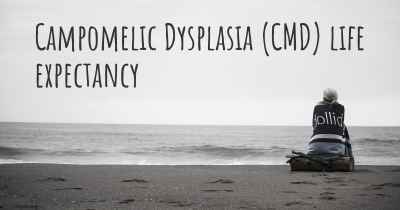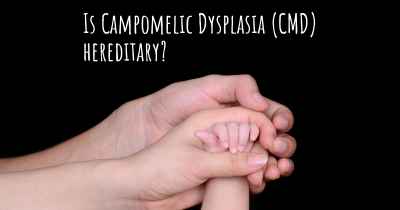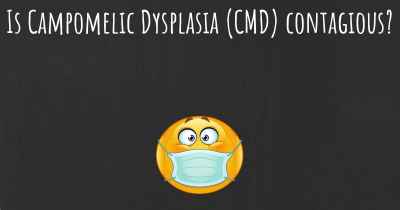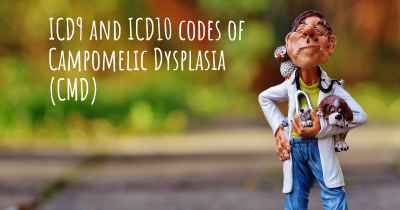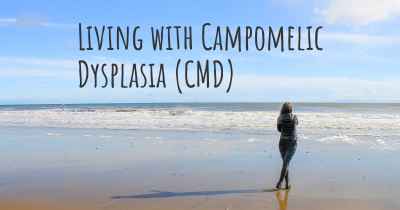Campomelic Dysplasia (CMD) diet. Is there a diet which improves the quality of life of people with Campomelic Dysplasia (CMD)?
Are you aware of a diet that can improve the quality of life of people with Campomelic Dysplasia (CMD)? Is there a diet that is suggested to avoid when having Campomelic Dysplasia (CMD)? See if there is a diet that can improve the quality of life of people with Campomelic Dysplasia (CMD), recommended and to avoid food when having Campomelic Dysplasia (CMD)

Campomelic Dysplasia (CMD) Diet: Improving Quality of Life
Campomelic Dysplasia (CMD) is a rare genetic disorder that affects skeletal development and can lead to various physical and medical challenges. While there is no specific diet that can cure or reverse CMD, a well-balanced and tailored diet can play a crucial role in improving the quality of life for individuals with CMD.
Meeting Nutritional Needs:
Individuals with CMD often face difficulties with feeding and digestion, which can result in inadequate nutrient intake. It is essential to work closely with a healthcare professional, such as a registered dietitian, to develop a personalized nutrition plan that meets the specific needs of the individual.
Caloric and Protein Requirements:
Due to the increased energy expenditure associated with CMD, individuals may require higher caloric intake compared to the general population. This can be achieved by incorporating nutrient-dense foods such as lean proteins, whole grains, fruits, vegetables, and healthy fats into the diet. Adequate protein intake is particularly important for supporting growth and development, as well as maintaining muscle strength.
Calcium and Vitamin D:
Individuals with CMD are at an increased risk of developing bone abnormalities and osteoporosis. Therefore, it is crucial to ensure sufficient intake of calcium and vitamin D, which are essential for bone health. Foods rich in calcium include dairy products, leafy greens, and fortified plant-based milk alternatives. Exposure to sunlight and consumption of fortified foods can help meet vitamin D requirements.
Iron and Vitamin C:
Anemia can be a common complication in CMD. Iron-rich foods such as lean meats, beans, fortified cereals, and leafy greens should be included in the diet. Consuming vitamin C-rich foods alongside iron-rich foods can enhance iron absorption. Citrus fruits, strawberries, bell peppers, and tomatoes are excellent sources of vitamin C.
Fiber and Digestive Health:
Constipation is a frequent concern in CMD, and a diet rich in fiber can help promote regular bowel movements. Including whole grains, fruits, vegetables, legumes, and adequate fluid intake can aid in maintaining digestive health.
Hydration:
Proper hydration is essential for overall health and can help prevent constipation. Encouraging an adequate fluid intake, primarily through water, is crucial. However, individual fluid needs may vary, so it is important to consult with a healthcare professional to determine the appropriate amount.
Feeding Techniques and Assistance:
Individuals with CMD may require specialized feeding techniques or assistance due to difficulties with swallowing or oral motor skills. Occupational therapists and speech-language pathologists can provide valuable guidance and support in optimizing feeding strategies to ensure adequate nutrition.
Monitoring and Regular Follow-ups:
Regular monitoring of growth, nutritional status, and overall health is essential for individuals with CMD. Collaborating with a multidisciplinary healthcare team, including dietitians, physicians, and therapists, can help address any nutritional concerns and make necessary adjustments to the diet plan.
Conclusion:
While there is no specific diet that can cure Campomelic Dysplasia (CMD), a well-planned and personalized diet can significantly improve the quality of life for individuals with CMD. Meeting nutritional needs, ensuring adequate caloric and protein intake, addressing specific nutrient requirements, promoting digestive health, and seeking professional guidance are key factors in optimizing nutrition and overall well-being. By focusing on individualized nutrition, individuals with CMD can enhance their overall health and potentially mitigate some of the challenges associated with the condition.
